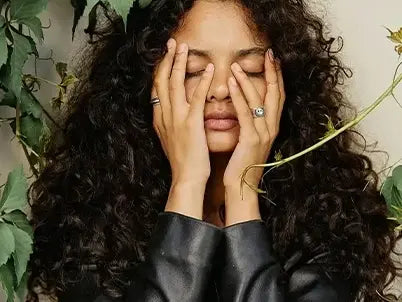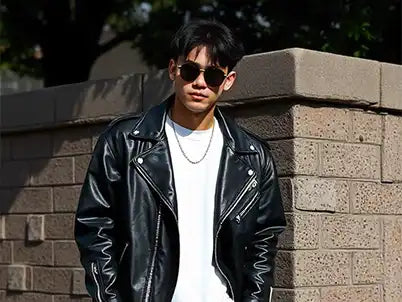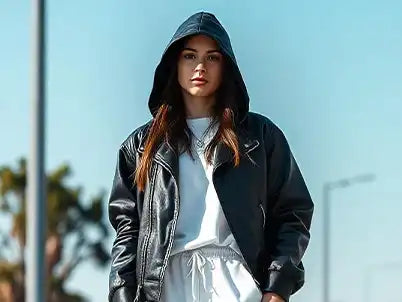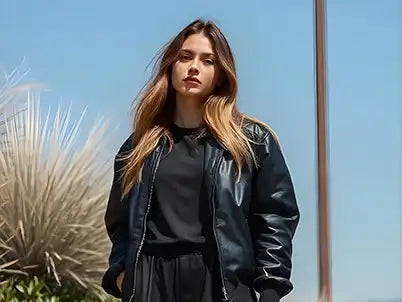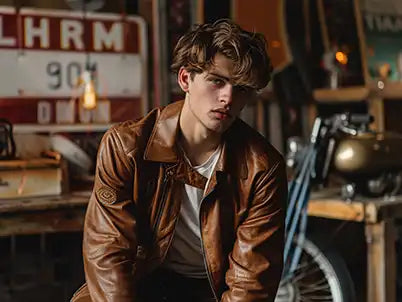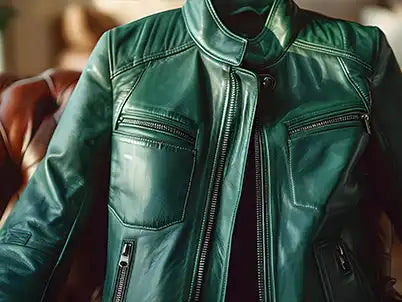Leather is a timeless material that has been recognised as one of the luxurious due to its classy appearance. It has been used throughout history in a variety of colours and forms. Not just that, leather can be found in a variety of products, including jackets, jeans, accessories, bags and watch straps. Each of these can be identified by its specific type, finish, grade and texture However some of these characteristics are dependent on the quality of one another.
For example, cowhide leather is known to produce exceptional results Full-grain leather on the other hand is recognised to be the finest and high-quality leather. So, if you are among those who want to understand the different types of leather textures before making the purchase, worry not. In this guide you I will cover about the leather texture, its types, and how it differs from each other.
What Is The Texture Of Leather?

Without any doubt the quality of leather texture totally depends on the type of grain used. The grain's size and shape, whether it’s wide, small, play a key role in defining how the leather feels and looks. For example, leather jackets with a rough texture usually have wide grain, while one with a smooth finish uses finer grain. It is also important because it helps confirm the leather's authenticity and uniqueness. It also affects how porous the leather is, which impacts breathability. Leather made from full-grain, especially with a semi-aniline finish offer higher quality and more water-resistant. On the other hand, leather made from bonded or split-grain has lower water resistance.
Most Common Types Leather Textures
There are many types of leather textures which are popular among industry. Some of common type are

Smooth
This is one of the popular types that has been polished. It has a flattened shine that is commonly found on vegetables, oils, and patent leather. One common issue with smooth textured leather is that it shows tears and scratches.
Flat Grain
This texture is gritty yet has a soft feel. Leather that has a flat grain texture is quite durable and resistant to wear and tear.
Grainy
As the name shows, this leather texture is grainy. You can feel it by touching it with your hands. From the smell to the look and feel, the grainy texture is prominent and easy to spot.
Embossed
If any kind of heat is utilized on it, it transforms into embossed leather. This method is used to create different patterns which add a unique look to leather goods, such as crocodile embossing, which makes the cowhide look like crocodile skin.
Popular Types of Leather Textures
These are some other popular types of leather texture that you will notice in different leather products especially in luxury leather jackets

Suede Texture
When the top grain leather is divided into two parts, the one that is present on the inside part becomes available and known as suede which has a mind blowing soft and fuzzy texture on both sides
Nubuck Texture
Suede is the inner side of the split grain hide, nubuck is the outside side, which has been rubbed to provide a soft, fuzzy, and finer texture than suede. This one is a highly durable form of leather with a velvety feel.
Pigmented
It undergoes the process of dye application, which results in a very scarce amount of grain on it. This one is also a durable leather, but requires regular maintenance because the pigment layer is prone to peeling.
Buffered
The buffered leather's surface is smooth and silky, with no visible grain in the material's outer layer.
Are Leather and Textured-Leather the Same in Texture?
Textured leather differs from regular leather in both feel and appearance, and the comparison table below highlights key differences to help you understand how each type stands out.

| Aspect | Leather Texture | Textured Leather |
|---|---|---|
| Definition | The natural or processed surface feel/pattern of any leather | Leather that has been deliberately embossed or treated to add texture |
| Origin | Can be natural (like full-grain) or slightly altered (top-grain) | Artificially created texture using embossing or pressing |
| Purpose | Reflects the natural grain, quality, and authenticity | Adds design, style, or mimics exotic patterns (like crocodile, lizard) |
| Look & Feel | Depends on grain type—can be smooth, coarse, or in-between | Often has a patterned or decorative surface |
| Examples | Smooth full-grain leather, pebbled leather | Croc-embossed leather, Saffiano leather, snake-textured finishes |
| Used In | Premium leather goods, luxury jackets, high-end bags | Fashion accessories, trend-forward bags, and jackets |
| Breathability | Often more breathable, especially full-grain | May be less breathable due to added finishes or coatings |
What Are the Different Appearances of Leather?
Leather comes in different appearances and each of them offers a unique texture and aesthetic.

- Distressed Leather: Leather with an aged, worn-out look that adds vintage charm.
- Rustic Leather: Has a rugged, natural finish that gives off a raw, earthy feel.
- Crackled Leather: Features a cracked surface that mimics the look of aged, weathered leather.
- Pull-Up Leather: Changes color slightly when stretched or bent, creating a rich, dynamic look.
Different Types of Leather Finishes
Now let’s check out the most types of leather finishing and their effect on the leather texture.

| Leather Finish | Description |
|---|---|
| Natural Finish | Leather that hasn’t been treated or coated. It looks raw and feels natural. |
| Patent Finish | Leather that has a shiny, plastic-like coating. Very glossy and smooth. |
| Matte Finish | Leather with no shine at all. It has a flat, soft look. |
| Satin Finish | Leather with just a little bit of shine. Not too glossy, not too dull. |
| Shiny Finish | Leather that reflects light and looks bright and polished. |
| Glossy Finish | Leather with a strong shine that stands out and looks very sleek. |
FAQs
The five main leather types are full-grain, top-grain, genuine, split-grain, and bonded leather.
Is bumpy leather the same as pebbled leather?
Yes, it is another name for pebbled leather, popular for its textured, uneven surface.
What Is the softest leather?
Lambskin leather is noted for its smooth and supple texture. It is the softest natural leather available in the market.


